from 0 review
10 Nights / 11 Days
Daily Tour
20 people
___
Welcome to the enchanting world of Gujarat, a state in western India known for its rich history, diverse culture, and stunning landscapes. This 10 nights, 11 days Gujarat package is your gateway to exploring the treasures of this vibrant region. From ancient temples to bustling markets and pristine beaches, Gujarat has something to offer every traveler.
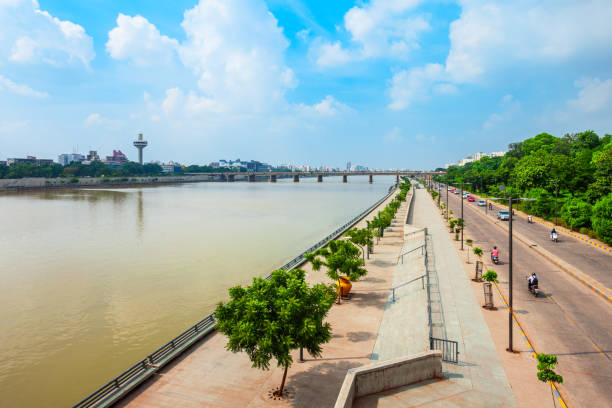
Arrive Ahmedabad and drive to Bhuj; Arrive Bhuj and transfer to your hotel.
The historic city of Bhuj derives its name from the Bhujiyo Dungar, a hill, overlooking the present day Bhuj town. Bhuj is a typical example of a desert town located between two geographical features - Bhujiyo Dungar on the east & Hamirsar Lake on the west. Bhuj, the major town of Kutch, is an old city established in 1510. With its surrounding wall, the atmospheric bazaar area, crenelated gateways, old palaces and striking temples, the town still retains a medieval character. Every Nov/Feb it hosts the annual Rann Utsav festival. The most colourful town in the already so colourful state of Gujarat. Kuchh Din Toh Guzaaro Gujarat Mein!
Overnight at hotel
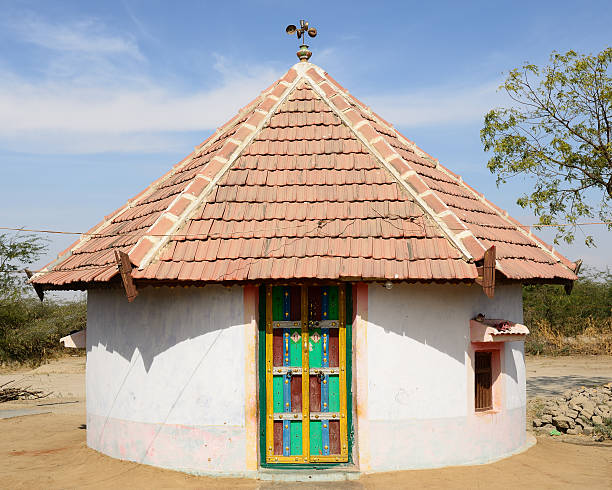
Today after breakfast proceed for day excursion to Banni villages. (North Bhuj)
Amidst the Desert land of infinite dimensions, are suspended, quaint little villages. These are the last villages on the India-Pakistan border. Here you will come across master craft people' exposing their traditional art, turning our master pieces every day. Their ornaments, clothes, utensils, everything they use - will make you feel as if you have stepped into lifestyle museum leaving you spellbound.
Visit the Bhirandiyara – is a favorite Tea stop for locals and visitors alike on the road to Khavda. The village boasts of a delicious sweet – fresh Maavo. This milk-based sweet is best when eaten hot. Most of the roadside stalls sell Maavo. The local Meghwal Community has exquisite embroideries and skillfully decorated, colorful Mud Bhungas.
Ludia Village is comprised of several hamlets belonging to the Meghwal & Samma Communities. The latter community, primarily herdsmen, is more conservative when it comes to tourists. Gandhi nu Gam, populated by the Meghwal community, features beautifully Painted Bhungas. The Kanjari (Blouses) of the women and the Bhunga decoration of this village are especially colorful.
Khavda' pottery is an art form of Khavda, North Kutch. While the men do all the throwing in terracotta, the women handle all the surface decoration which in this northern Kutch village of Ludia is primarily in the form of painting.
The potter gets mud from a specific acre (A lake) area near village. It is called 'Rann ka mitti'. This soft clay is shaped into a pot on a potter’s wheel and left to dry in shade, then Kumbhar women use red, black, and white clay-based paints to decorate each piece of pottery with distinct community-specific designs. After a while, it is cleaned and put in the sun to dry and then baked in a furnace, powered by simple and locally available fuels of dry wood and cow dung. The vessels are coated with a thin wash of geru (red color). The pots of Khavda get their red colour from Geru, a type of soil (ocher/ umber), and the black and white dots and stripes are also made with natural material. Finished pieces lie aside, ready for drying. The terracotta pots of Khavda are distinct from the ones we may see elsewhere, because of their painting and form which is a result of repeated cleaning at every stage of the process of their making.
White Rann: the spectacular sight of boundless white desert is the stunning creation of nature, unique to this world.
Overnight at hotel
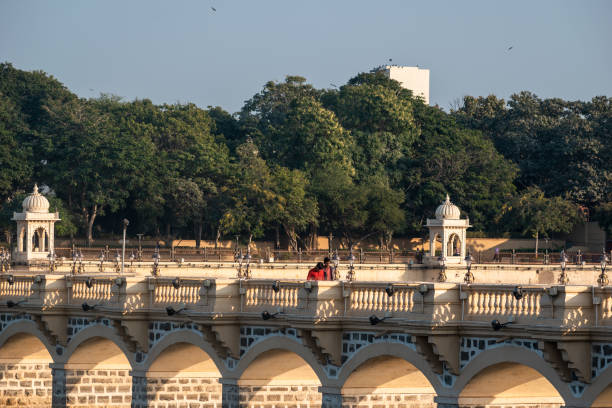
After breakfast drive to Jamnagar, Arrive Jamnagar, and transfer to your hotel.
Jamnagar or the city of Jams was one of the most important princely states of Saurashtra. Today, the 200km long Jamnagar coast is dotted with several industries run by corporate giants in the region. Jamnagar itself is a centre for the brass industry, bandhani fabrics and zari work. But it’s the princely past that attracts visitors-the Pratap Vilas Palace in a renaissance style, the 16th century Darbargarh Palace with a festival of stone sculptures, the impressive Willingdon Crescent, the museum at Lakota Island Palace of Jamsarovar Lake and statues of famous cricketing prince Ranjit Sinhji. Also, worth seeing are the Maqbaras, the colorful sculpture of Sonapuri and the Jain temples in the city centre. Later Visit Bala Hanuman Temple: Bala Hanuman Temple is a pilgrim place venerated by the devotees of Lord Rama. It is a world-famous temple, known for the continuous chanting of Jai Ram, Shri Ram. The chanting is going on since 1964 and has found a place for it in the Guinness Book of World Records. People chant the name of the Lord in shifts, 24hours a day.
Overnight at hotel
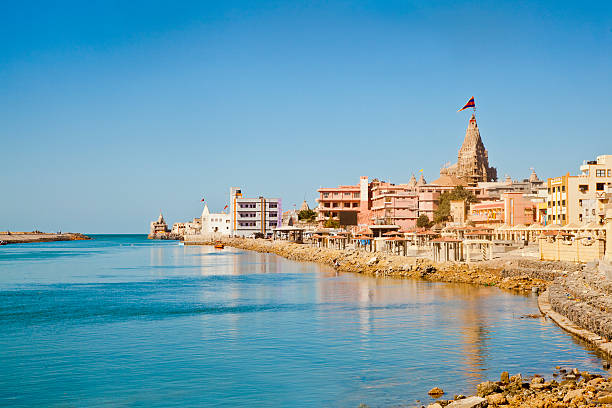
After breakfast drive to Dwarka, Arrive Dwarka and transfer to your hotel.
The small coastal town of Dwarka is one of the four most holy Hindu pilgrimage sites in India. It is here that Krishna founded his capital after leaving Mathura. Excavations have revealed 5 earlier cities at the site, all submerged. The present town dates largely to the 19th century and attracts thousands of pilgrims to celebrate the Holi, Diwali and Janmashthami festivals. The must visit Dwarkadhish Temple is the main crowd drawer here. The multi pillared Sabha Mandapa in this temple leads to a 60-pillared sanctum sanctorum that dates back 2500 years according to the scriptures.
Later visit Bet Dwarka, Nageshwar Temple, Rukmani Temple, and Gomati Talav. The visit of Dwarka is not complete without a visit to Bet Dwarka, an island at 30 Kms. Off the coast of Okha port, At Bet, there are temples of Vishnu (in the form of 'matsya'), Radha, Lakshmi, Satyabhama, Jambuvanti and Devaki. A ferry ride from Dwarka to the island of Bet near Okha makes a pleasant outing. Nageshwar temple is situated towards Okha dedicated to Lord Shiva and houses one of the 12 Jyotirlingas in an underground chamber. Then visit Gomati Village, Gomati Talav and Gomati Mandir.
Overnight at hotel

Early morning visits the Dwarkadhish Temple and witness the Aarti.
After breakfast drive to Somnath visiting Porbandar enroute.
Porbandar, the coastal heritage town of Gujarat is located on the Saurashtra peninsula, on the Arabian Sea. This city is described in Skanda Purana as Sudamapuri and Ashmavati and had a flourishing trade with Africa and Arabia. Till date, the spice market in Porbandar draws a huge crowd. According to the legends, this city was the main link of the great friendship between Lord Krishna and Sudama. Porbandar was established as a capital by Rana Sartanji in 1785 AD. Porbandar was the former capital of the Jethwa Rajput petty princely state. The most impressive feature of Porbandar is the city planning and the stone buildings with ashlar masonry and rich carving, the facades of the houses on either side of the streets, with windows and carved gateways. Porbandar is also associated with Mahatma Gandhi, the father of the nation as he was born here. Today, fine quality silk and cotton are manufactured here. There are also chemical factories and cement works.
Later visit Kirti Mandir – Kirti Mandir was the house of Mahatma Gandhi and Kasturba, his wife. This place is situated near the place where the Mahatma was born. This place is now a small museum and has a Gandhian library and a prayer hall. Bharat Mandir is another place to visit, which houses relief map of India and reliefs of great historical personalities who shaped India’s future.
Later continue to drive to Somnath; arrive Somnath and transfer to your hotel.
Somnath consists of a few streets leading away from its phoenix like temple. The rugged sea below gives it a lonely, wistful charm. Somnath is mainly known for the legendary shore temple of Somnath, which is dedicated to the Lord Shiva. The temple is an example of grit and determination and how to rise out of downfall as the temple has been plundered and destroyed many times and re-erected again in all its glory. To be precise, destroyed seven times and built eight!
The legendary shore temple of Somnath is one of the twelve most sacred shrines dedicated to the Lord Shiva. The temple contains the Jyotirlinga of Lord Shiva. According to the legends, the Somnath temple is very old and was originally built-in gold by the Somraj, the Moon God. Later, it was rebuilt by Ravana, in silver; then by Krishna in wood and Bhim Dev in stone. Mahmud of Ghazni, upon hearing the description of the richness of the Somnath temple by Al Biruni, an Arab traveller, visited this temple in 1024 AD. At that time, this temple had about 300 musicians, 500 dancing girls and 300 barbers to shave off the heads of pilgrims. After a two day’s battle, Mahmud destroyed the temple and carried away jewels and gold to his homeland. In all, the Somnath temple was rebuilt and destroyed eight times. This temple was finally rebuilt in 1950 with the support of Sardar Vallabhabhai Patel. The current temple was built as per the traditional designs on the original site by the sea and is a serene, symmetrical, and sinuous structure. Today, this majestic temple is a replica of the earlier temple.
Later visit Bhalka Tirth – Bhalka Tirth is situated halfway between Veraval and Somnath. At this place, Lord Krishna was mistaken for a deer and wounded by an arrow. It is here that Lord Krishna decided to leave his human form and proceed to the eternal world.
Overnight at hotel
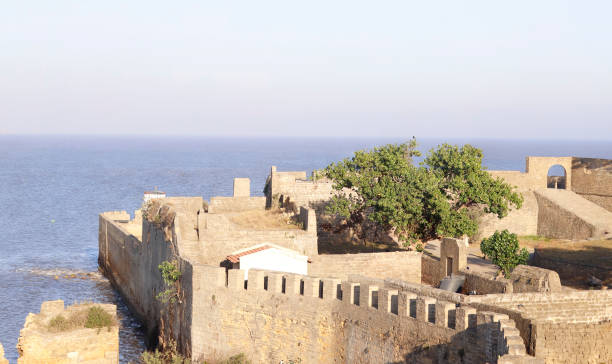
After breakfast drive to Diu, Arrive Diu and transfer to your hotel.
A beautiful blend of sun, sand and sea, Diu is a God’s gift to those in quest of a blessed land where the weary weight of this unintelligible world can, for a while, be lightened and the waking soul can hear the music of the nature. This tiny island of breeze, beauty and serenity situated off the southern tip of the Saurashtra (Kathiawad) peninsula of Gujarat, lapped by the Arabian Sea, is a picture of calmness with superb beaches and fascinating history.
St. Paul’s church: The Church adorned with curiously treated volutes & shell-like motifs and the magnificent wood carving is the most elaborate of all the Portuguese churches in India.
St. Thomas Church Museum: A huge edifice in gothic architecture was built in 1598. A part of it has been converted into a museum an Archaeological treasure house.
Diu Fort: This majestic structure stands on the coast of Diu sentinel. Once inside, you are overwhelmed by the gaunt majesty of the ancient stonework which transports you to a bygone era of gallant soldiers where time stands still.
Nagoa beach: The Nagoa beach is incredibly beautiful & quiet. It is an exceptionally beautiful horseshoe (semi-circular) shaped beach.
Overnight at hotel
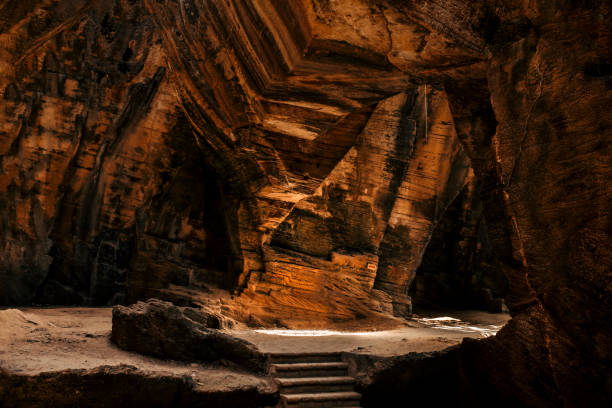
Day is at leisure.
Overnight at hotel
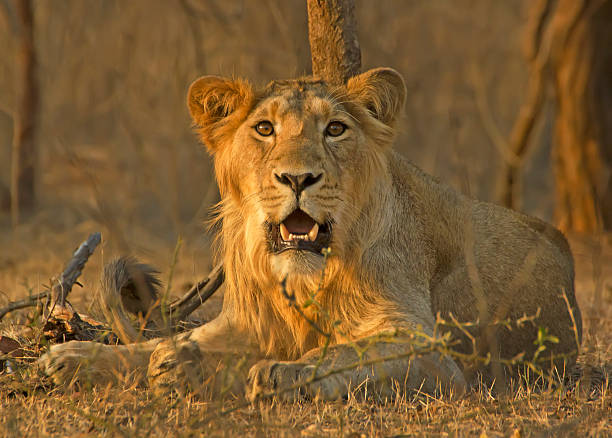
After breakfast drive to Sasan Gir, popularly known as Gir, the most famous lion sanctuary in India. And the one place in the subcontinent where Asiatic Lions can be found in the wild. Sasan Gir is on the south-western border of Saurashtra peninsula in Gujarat and is home to nearly 400 Asiatic lions. The Sanctuary was created in 1913 to provide protection to the largest surviving groups of the Asiatic lions and was given the status of the sanctuary in 1965; the numbers of lions has been steadily on the rise since 1980. This is the only place in the World outside the African continent where the lion can be seen in its natural habitat. The lion safaris are popular among tourists & jeeps are freely available for touring the forest. Though the most famous inhabitants of the park are Asiatic lions, but it also provides natural habitat to lot of other species like Chital, Chinkara (Gazelle) Four-horned antelope, Leopard, Nilgai, Spotted deer, Wild boar, Wild ass, Monkeys, Parrots and Peacocks, many other birds etc. Please note, Lion safaris are to be booked online only.
Overnight at hotel

After breakfast drive to Ahmedabad. If interested, visit the Sidi Tribal villages on your way out of the Gir jungle. These tribals came to India from Africa as slaves to the emperors and made India their home. African by looks, Indian by clothes and Gujarati by language - a unique blend, interaction with whom must not be skipped.
Arrive Ahmedabad and transfer to your hotel. Ahmedabad- the world heritage city is Located on the banks of the river Sabarmati; the city was founded by Sultan Ahmad Shah in 1411. Today it is one of the fastest growing cities of India and is an immense repository of tradition, history & culture. Its famous walled area is one of the finest examples of community living & the city thrived as the textile capital & was nicknamed “Manchester of the East' in 1888. This multicultural city is home to some of the finest Indo-Saracenic mosques & Jain temples. A heritage walk in the heritage city is highly recommended.
The old city of Ahmedabad is dotted with labyrinthine by-lanes guarded by huge gates called 'polls'. The exquisite carved wooden mansions and havelis are marvellous. The city also offers a rich architectural legacy that blends Hindu and Muslim schools of architecture, stone and brick with arches, domes and vaults, carved pillars, trefoil designs besides the modern buildings designed by the famous French architect, Le Corbusier, and Louis Kahn.
Overnight at hotel
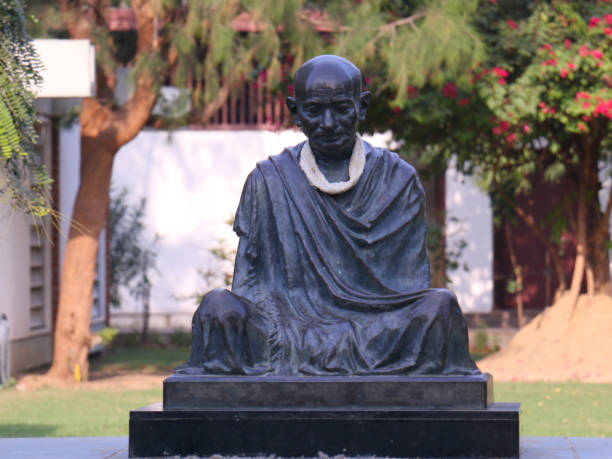
After breakfast proceed for city tour of Ahmedabad.
Gandhi Ashram: On a quiet peaceful stretch of the Sabarmati River, Mahatma Gandhi set up a simple retreat in 1915. This was his Satyagrah Ashram and for many years it was the nerve centre of India’s freedom movement. It was from here, in 1930, that Mahatma began his famous Dandi March to the sea to protest the Salt Tax imposed by the British. Hridaya Kunj, the simple cottage where he lived, is now a national monument and preserved as it was during the Mahatma’s lifetime. Must pick gifts and souvenirs from the Ashram shop. Spend a little time here by the river watching the parrots and the squirrels. Peace and tranquility prevail here.
Sidi Sayed Mosque: One part of the wall in the old citadel of the mosque built by Ahmed Shah’s slave, Sidi Sayed, is celebrated the world over for its exquisite stone window tracery – a superb & peerless example of delicate carving that transforms stone into filigree.
Hutheesingh Jain Temple: Built outside the Delhi Gate in 1850 by a rich Jain merchant, the Hutheesingh Temple is the best known of Ahmedabad’s many ornate Jain temples.
Adalaj Step-well: Step wells were built in olden times to serve the man purposes of - holding rainwater for later use, a resting place for the travellers, a watering hole for the travellers who had caravans and animals with them. Best examples of rainwater harvesting! The Adalaj step well is situated 17kms north of Ahmedabad. The step well at the village of Adalaj is another fine example of this magnificent architectural form. Adalaj Vav is richly carved, every pillar and wall surface covered with leaves and flowers, birds and fishes and friezes of ornamental designs.
Akshardham: Lord Swaminarayan, born in Chapaya in Uttar Pradesh, took a seven-year pilgrimage in Gujarat to preach his religion. He built six temples, the first being at Kalupur in Ahmedabad. Akshardham, the Swaminarayan temple of Gandhinagar, is a modern complex, built in traditional Indian architectural style from 6,000 metric tons of pink Rajasthan sandstone, carved by expert artisans from Bansipahadpur. The temple is set in a multi-acre garden called Sahajanand Van, with intricate sculptures of Hindu Gods. There is a gold leaf copper sculpture of Lord Swaminarayan that faces similar sculptures of Gunatinand Swami. The interiors have beautiful columns in rosewood that rise to a high dome. Akshardham remains closed on Mondays.
Overnight at hotel

Today in time transfer to Ahmedabad Airport / Railway Station to board flight / train for your onward journey to your next destination.
Leave a review